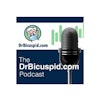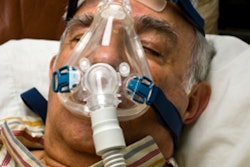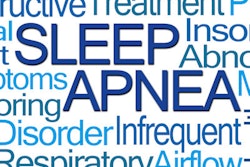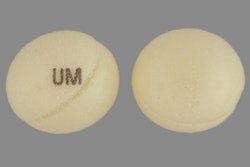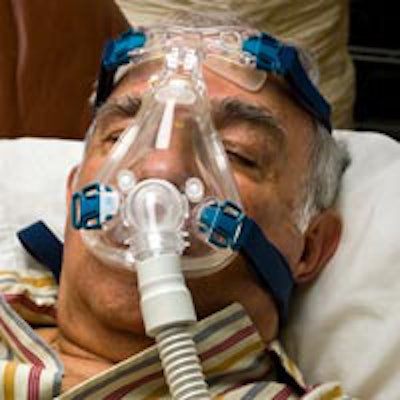
While screening for obstructive sleep apnea (OSA) is often recommended as a practice benefit for dental offices, what are the benefits -- and harms -- of sleep apnea screening?
Researchers from the University of North Carolina tried to address this question in a new report published in the Journal of the American Medical Association. Unfortunately, they found the evidence lacking to demonstrate the effectiveness of most sleep apnea therapy techniques (January 24/31, 2017, Vol. 317:4, pp. 415-433).
"There is uncertainty about the accuracy or clinical utility of all potential screening tools," wrote the group led by Daniel Jonas, MD, MPH, an associate professor of medicine at the University of North Carolina at Chapel Hill.
Literature review
Obstructive sleep apnea is seen in about 15% of U.S. adult men and about 5% of U.S. adult women. The diagnosis is based on an apnea-hypopnea index (AHI) of at least 15 or an AHI of at least 5 plus symptoms of disturbed sleep.
“There is uncertainty about the accuracy or clinical utility of all potential screening tools.”
Published reports have sleep apnea contributing to adverse health outcomes such as motor vehicle crashes, cognitive impairment, cardiovascular events, atrial fibrillation, stroke, and death. Questions remain, however, as to how much OSA contributes to these outcomes, or whether other confounders, such as age or body mass index (BMI), have more influence.
Current practice is to screen patients for unrecognized obstructive sleep apnea. Screening strategies include questionnaires and clinical prediction tools. If sleep apnea is found, the screenings are followed by treatment to improve sleep quality and normalize AHI and oxygen saturation levels. Patients may receive treatment in a sleep facility or undergo home-based testing with a portable monitor.
The authors conducted a literature review that included 110 studies with more than 46,000 patients. Their goal was to review primary care-relevant evidence on screening adults for OSA, as well as test accuracy and treatment, to inform the U.S. Preventive Services Task Force. They investigated eight areas.
1. Health outcomes
The authors first addressed the following:
- Question 1a: Does screening for OSA in adults improve health outcomes?
- Question 1b: Does the evidence differ for subgroups defined by age, sex, BMI, or OSA severity?
Dr. Jonas and colleagues found no eligible studies that addressed these questions.
2. Accuracy
The second set of questions dealt with accuracy and included the following:
- Question 2a: What is the accuracy of currently existing clinical prediction tools or screening questionnaires in identifying persons in the general population who are more or less likely to have OSA?
- Question 2b: What is the accuracy of multistep screening approaches, such as using a questionnaire or prediction tool followed by overnight home-based testing, in identifying persons in the general population who are more or less likely to have OSA?
The group found three cross-sectional studies that addressed these questions: One evaluated the Berlin Questionnaire, and the other two evaluated the Multivariable Apnea Prediction (MVAP) score, alone and when followed by in-home portable monitoring. The authors judged the evidence to be fair.
3. Diagnostic tests
A total of 21 studies addressed the following questions about diagnostic tests:
- Question 3a: What are the accuracy and reliability of diagnostic tests for OSA?
- Question 3b: Do the accuracy and reliability of diagnostic tests for OSA differ for subgroups defined by age, sex, or BMI?
The authors found fair to good evidence from the two systematic reviews and 19 primary studies that evaluated portable monitors. Issues included a small total sample size, missing data, and a lack of independent scoring of portable monitor and polysomnography results, among others.
4. Treatment
Do any treatments improve intermediate outcomes? The authors found 76 randomized controlled trials that addressed the following questions:
- Question 4a: How much does treatment with continuous positive airway pressure (CPAP), mandibular advancement devices (MADs), surgery, or weight loss programs improve intermediate outcomes (AHI, blood pressure, or daytime sleepiness) in persons with OSA?
- Question 4b: Do the benefits of treatment (for intermediate outcomes) differ for subgroups defined by age, sex, BMI, or OSA severity?
Of the trials, 56 evaluated continuous positive airway pressure, 10 evaluated mandibular advancement devices, six looked at surgical interventions, and six studied weight loss, diet, and exercise programs.
The authors found fair to good evidence from these trials. Issues were short duration (less than 12 weeks), and the fact that there was only one trial for bariatric surgery and one for each of five different airway surgical treatments, all with small sample sizes.
5. Benefits of treatment
The authors included 50 randomized controlled trials to address the following questions:
- Question 5a: Does treatment with CPAP, MADs, surgery, or weight loss programs improve health outcomes in persons with OSA?
- Question5b: Do the benefits of treatment (for health outcomes) differ for subgroups defined by age, sex, BMI, or OSA severity?
Dr. Jonas and colleagues found only fair evidence from these studies. Study durations were too short, and there were too few total events observed.
6. Health outcomes
The sixth topic concerned the AHI and health outcomes:
- Question 6: Is there an association between the AHI and health outcomes?
The authors reported fair to good evidence from 11 prospective cohort studies addressing this question.
7. Screening harms
The seventh key area focused on any potential harms associated with screening:
- Question 7a: Are there harms associated with screening or diagnostic testing for OSA?
- Question 7b: Do the harms of screening or diagnostic testing differ for subgroups defined by age, sex, or BMI?
No eligible studies were identified.
8. Treatment harms
The authors were able to identify 22 randomized controlled trials to address the final key topic:
- Question 8a: Are there harms associated with treatment of OSA?
- Question 8b: Do the harms of treatment differ for subgroups defined by age, sex, BMI, or OSA severity?
The group reported fair evidence from the trials. Limitations included high heterogeneity in reporting and findings for CPAP and MADs, along with only single studies and small sample sizes for surgical interventions and weight loss programs.
Dr. Jonas and colleagues concluded that there is uncertainty about the accuracy or clinical utility of every potential screening tool. However, they reported that multiple treatments for OSA were able to reduce the AHI, Epworth Sleepiness Scale (ESS) scores, and blood pressure. The authors were unable to establish if CPAP and other treatments reduced mortality or improved most other health outcomes, although the studies reviewed did reveal a modest improvement in sleep-related quality of life.
Absence of trials
In an editorial in the same issue (pp. 368-370), Susan Redline, MD, MPH, wrote that the determination of insufficient evidence was attributed to the "absence of randomized trials assessing the effect of screening and of treatment on clinical outcomes; suboptimal performance characteristics of existing screening instruments; and concern over residual confounding in observational studies."
"However, the current recommendations, if misinterpreted, could negatively influence public health if they are used to discourage direct questioning or deployment of short screening questionnaires for identifying patients at high risk for OSA," Dr. Redline wrote.
After examining the published trials, the authors of the JAMA review found a lack of evidence to support treatment.
"Trials of CPAP and other treatments have not established whether treatment reduces mortality or improves most other health outcomes, except for modest improvement in sleep-related quality of life," they concluded.


